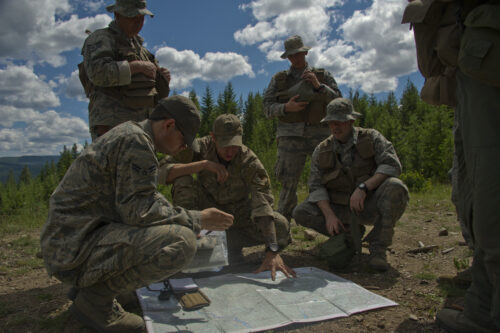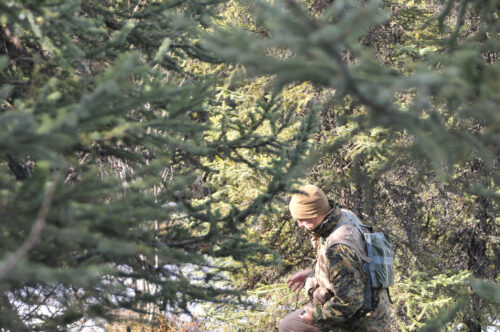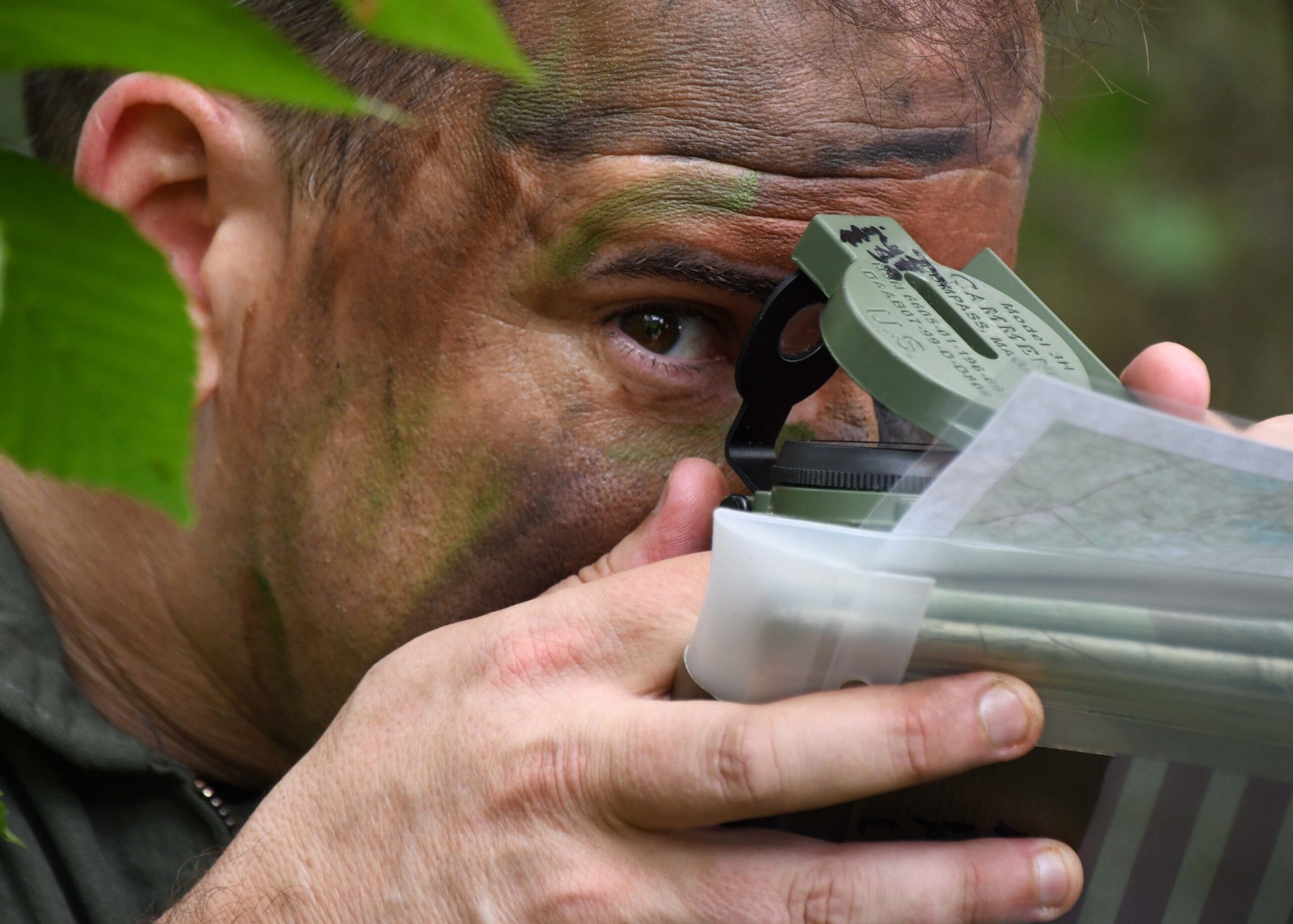Colonel William ‘Sling’ Bladen, 104th Fighter Wing vice commander, sharpens his land navigation skills as part of Survival, Evasion, Resistance and Escape training 16 August 2019, at October Mountain, Massachusetts. U.S. Air National Guard photo by Airman 1st Class Sara Kolinski / Released
Surviving in a hostile environment requires more than just physical strength. It demands mental fortitude, preparedness, and training. This article will delve into some basic principles of escape and evasion (E&E). providing practical advice on how to stay safe and avoid detection. Many of them are simple commonsense. The situation at hand should dictate the tactics, techniques, and procedures (TTP) used to address it. This article will not address counter-custody techniques or survival techniques, some the basics of which have already been covered in several articles in Spotter Up.

Attitude, Conditioning, and Preparation
The most crucial elements in any survival situation are attitude, conditioning, and preparation. Mental readiness is paramount. You must be prepared to act swiftly and decisively, even during the most routine parts of your day. Constant awareness of your surroundings is essential, and you should always have a clear idea of where safety lies.
Having the right tools on your person at all times can be a lifesaver. What you should carry is situationally dependent. Be intelligent about what you carry, why you carry it, and where you carry it. Have a narrative to justify its carry. Weapons and tools can be improvised if necessary.
Mindset is your most important tool. Always maintain a survivor’s mindset. Knowledge, training and experience, along with interpersonal skills are more important than what you carry. As so often said, your mind is your greatest weapon.
Utilize PACE planning. PACE (Primary, Alternate, Contingency and Emergency) is a planning methodology of preparing for different contingencies and reducing uncertainty. It involves creating three backup plans in case the main plan fails. The Primary plan is the first option, the Alternate plan is the second option, the Contingency plan is the third option, and the Emergency plan is the last resort. PACE planning is not complicated, but it is a useful and effective method to achieve your goals and complete your tasks.

Noise & Light Discipline
Maintaining total silence is key to avoiding detection. Every sound you make can potentially alert others to your presence. Therefore, moving quietly and minimizing any noise you make is crucial.
Just as with noise, light can also give away your position. Avoid using any light source unless it’s absolutely necessary. If you must use light, try to shield it as much as possible to prevent it from being seen from a distance.
Evading Pursuit
If you’re being pursued, it’s important to have a plan. This might involve creating diversions, leaving misleading clues, or even confronting your pursuers if necessary. Remember, the goal is to confuse and delay your pursuers, giving you time to escape. Avoid heavily surveilled areas. When attempting to escape, your goal is to get outside the hostile forces’ perimeter / area of control. Movement translates to survival.

When moving, always be aware of any light sources such as the sun or moon. Silhouetting against these light sources can make you easily visible. Try to move in a way that keeps you concealed and avoid open areas where you might be easily spotted.
If you’re being pursued, particularly by dogs, focus on defeating the dog handler, not the dog. Dogs are trained to follow scents, but it’s the handler who interprets the dog’s behavior. Misleading the handler can be an effective way to throw them off your trail.
Urban E&E
In an urban environment, blending in is key. Try to appear as ordinary as possible and avoid drawing attention to yourself. This might mean dressing like the locals, adopting similar behaviors, and avoiding any actions that might make you stand out. Every environment has a baseline. Match it and you’ll go unnoticed. Be a gray man.
In many parts of the world, blending in as a local is not possible for the vast majority of Americans. The goal in these situations is not stick out and to simply look like any other westerner in country. If you look the part most people will assume you are what you appear to be.
Being aware of your surroundings is crucial in an urban environment. Always know where the nearest exits are, be aware of any unusual behavior, and keep an eye out for potential threats. Utilize counter surveillance. Regularly changing your routine can also make it harder for anyone trying to track. your movements.
Urban environments provide numerous structures that can be used for concealment or escape. Alleys, rooftops, and underground systems can all provide routes for evasion. Knowing the layout of the city and understanding how to navigate these structures can be a significant advantage.
During urban escape and evasion, changing one’s appearance can be a crucial strategy. This involves altering physical characteristics to blend into the crowd and avoid detection. Changing appearance for urban evasion can involve modifying clothing, hairstyles, and behavior. This might include swapping a bright jacket for a muted one, adjusting hair or facial hair, altering one’s walk, or using accessories like hats or glasses to hide unique features.
Carry cash with you at all times for use only in emergencies. A minimum of $200- $300 in the local currency and USD is recommended for this purpose. Cash is king and untraceable. It can get you out of many situations.
8. Last Resorts
If all else fails, you may need to resort to more extreme measures to evade capture. This could involve taking risks that you would normally avoid. However, these should truly be last resorts, only used when all other options have been exhausted.
Remember, the key to survival is staying one step ahead. By following these principles, you can increase your chances of successfully escaping and evading in a hostile environment.
*The views and opinions expressed on this website are solely those of the original authors and contributors. These views and opinions do not necessarily represent those of Spotter Up Magazine, the administrative staff, and/or any/all contributors to this site.
